The ink brush (毛筆 máo bǐ) is used in both Chinese calligraphy and traditional painting, and is one of the Four Treasures of the Study (文房四寶 wén fáng sì bǎo) along with ink (墨 mò), paper (纸 zhǐ) and inkstone (砚台 yàntái).
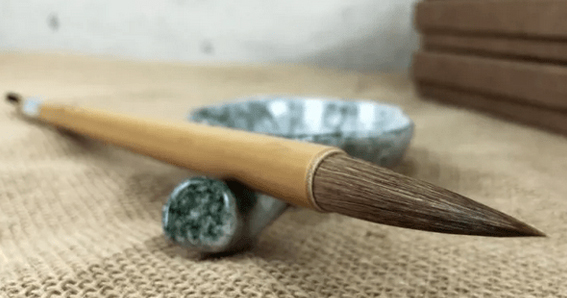
Structure:
The calligraphy brush is composed of two parts: the head or tip and the trunk. The latter can be made of bamboo, wood, porcelain or even ivory or jade, while the tip will always be made of animal hair. The part of the tip's hair that attaches to the trunk is known as "waist".
Brush types:
Calligraphy brushes vary in size, shape, tip length, and type of hair used. There are several ways to classify brushes, depending on the classification criterion:
- Depending on the kind of hair
- Depending on the length of the hair
- Depending on the tip's length-to-diameter ratio
Classification according to the type of hair used:
- Hard hair brushes (硬毫 yìngháo):
These are usually made with weasel hair (狼毫 láng háo). This name usually leads to confusion, and we often find it mistranslated as "wolf hair". It is important to emphasize that láng here refers to the weasel, 黃鼠狼 huáng shǔ láng, and not to the wolf, 野狼 yě láng. Wolf hair is too hard for writing and is not used in the manufacture of brushes. The hair of láng háo brushes comes from the weasel's tail.
Hard hair brushes retain less ink than soft hair ones, and are used specially for cursive (草書 cǎo shū) and semi-cursive (行書 xíng shū) styles of calligraphy. On the contrary, they are not often used in seal (篆書 zhuàn shū) and clerical (隸書 lì shū) styles because they are not very suitable for beginning strokes in these styles.
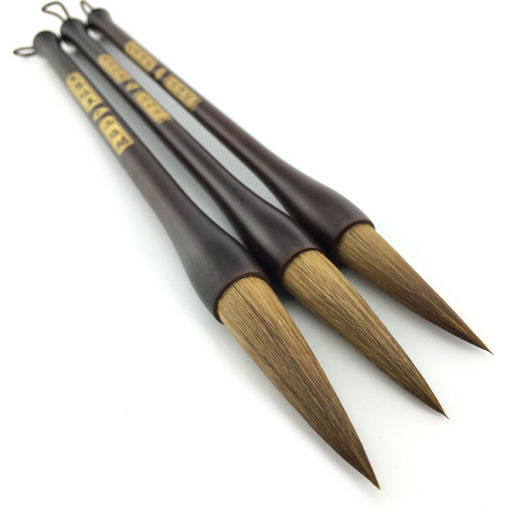
Weasel hair brushes (狼毫 láng háo).
- Soft hair brushes (軟毫 ruǎnháo):
The type of hair most commonly used for this kind of brush is goat hair (羊毫 yáng háo).
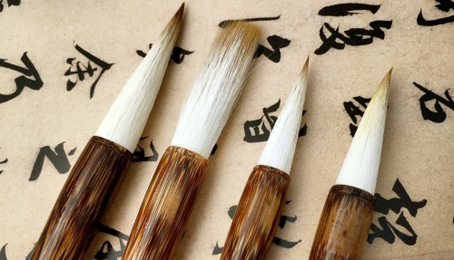
Goat hair brushes (羊毫 yáng háo).
- Mixed hair brushes (兼毫 jiānháo):
They use a combination of weasel, goat or other animal hair, in different proportions. They are suitable for a wide range of calligraphy and painting styles, but lack a specialized use in which they stand out.
- Others:
There are brushes made from other animals' hair, such as rabbit, deer, rat, horse, bear, etc.
Classification according to tip size (length of hair):
We have to keep in mind that in Chinese calligraphy, only a small part of the total length of the tip is used. Therefore, small brushes are hardly used.
- Long hair brushes (大楷毛筆 dàkǎi máobǐ): They are only used for especially large works.
- Medium hair brushes (中楷毛筆 zhōngkǎi máobǐ): These are the most commonly used, as they can produce lines of very different thicknesses, from very thin, using a small part of the tip, to quite wide, using longer hair length.
- Short hair brushes (小楷毛筆 xiǎokǎi máobǐ): They are only used to write especially small characters.
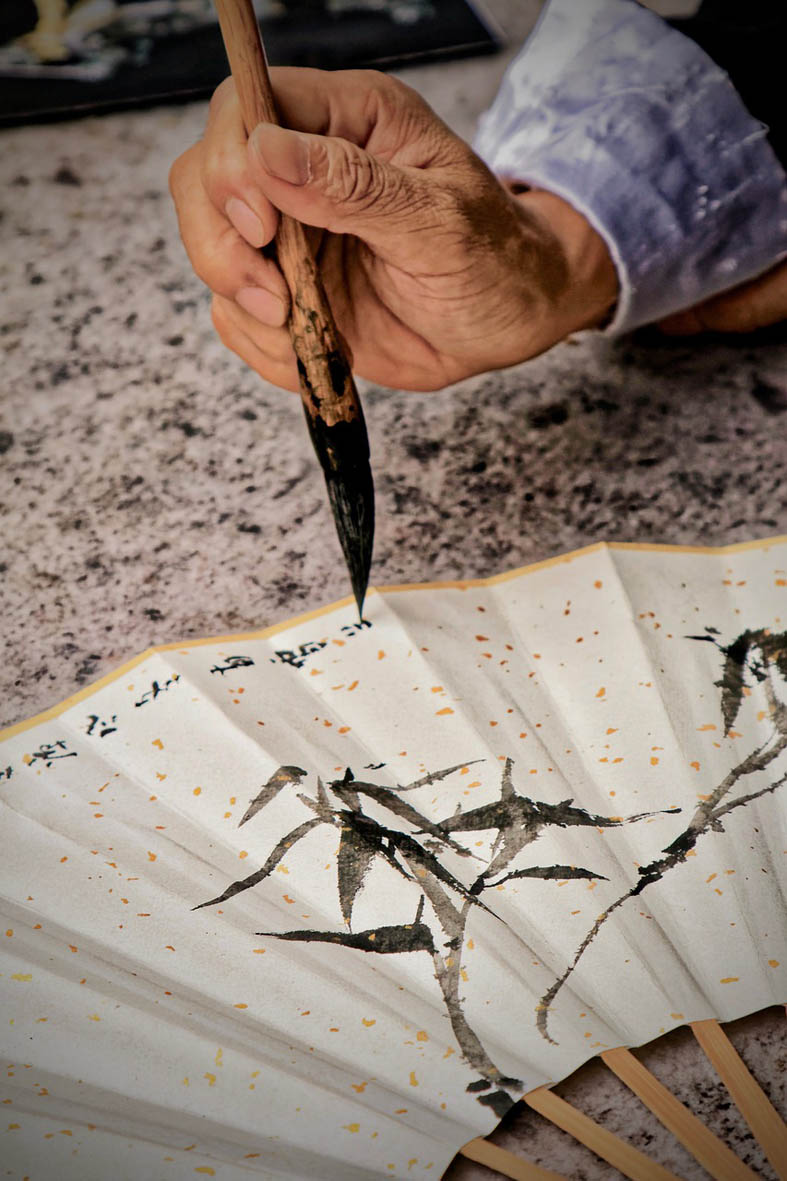
When practicing calligraphy, only a small part of the brush tip is used.
The Four Virtues of the Brush
There are four features that a calligraphy brush should ideally possess. These features are known as the Four Virtues of the Brush (筆有四德 bǐ yǒu sì dé):

- Point (尖 jiān): It refers to a sharp or pointed tip, like that of an awl. It must also be well defined and symmetrical.
- Evenness (齊 qí): Refers to the ability of the brush hairs not to disperse when pressed against paper.
- Roundness (圓 yuán): The brush tip should be kept exactly in the center of the handle axis, without deviating outwards.
- Strength (健 jiàn): The tip of the brush must be flexible and elastic; to do so it must contain enough hair. If a brush complies with this feature it will keep its shape after being pressed against the paper. To check if a brush has enough hair on the tip one can lightly press the "waist" of the brush, and it should not collapse in to the pressure.
Classification according to the tip's length/diameter ratio:
Depending on the tip's length/diameter ratio, we can distinguish between regular brushes and long brushes. The latter are those that, for the same tip diameter, have hair longer than regular brushes. These long brushes are known as cháng fēng máo bǐ 長鋒毛筆.
Regular brushes are easy to control, while long brushes are much more difficult to handle but generate more internal energy, and are therefore used only among the most expert calligraphers.
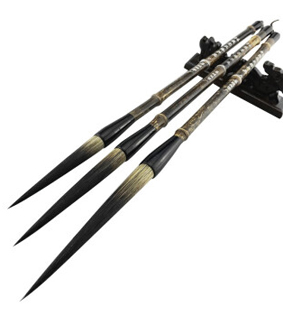
Long brushes (長鋒毛筆 cháng fēng máo bǐ).
History of the Ink Brush
According to the legend, the ink brush was invented by a general of the Qín 秦 dynasty, called Mēng Tián 蒙恬. However, traces of brushes prior to this time have been discovered. In addition, there are very old remains of ceramics that appear painted with what seems to be a brush, suggesting that the tool itself could predate written language.
According to the remains found we know that, prior to the Qín dynasty, the brush hair was tied around the trunk. It is after this time that the tip of the brush begins to be inserted into a hole in the handle. This modification improved the brush's ability to soak ink, as well as making it easier to transport and improving the speed and quality of writing.
